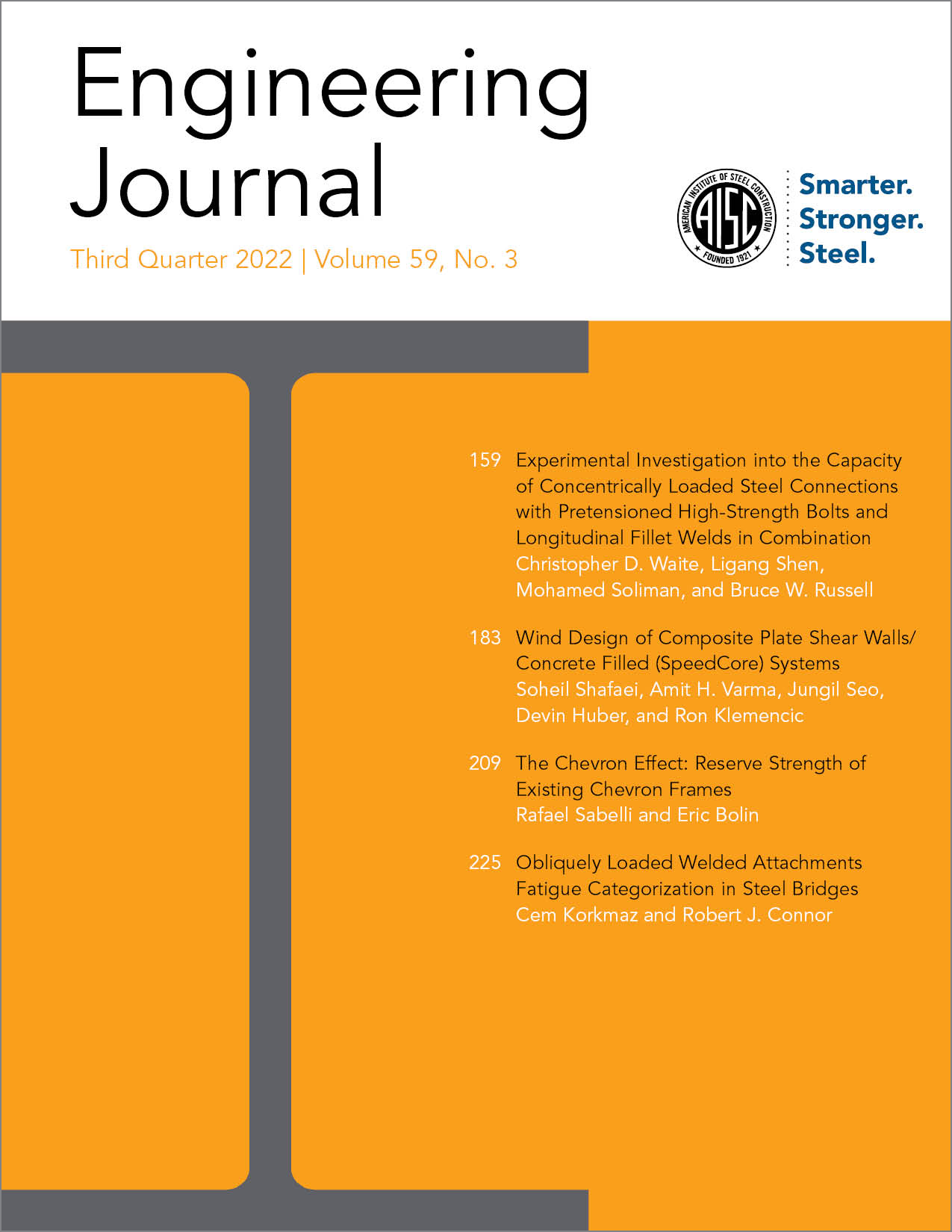Wind Design of Composite Plate Shear Walls/Concrete Filled (SpeedCore) Systems
DOI:
https://doi.org/10.62913/engj.v59i3.1192Keywords:
composite plate shear walls/concrete-filled, SpeedCore system, uncoupled C-PSW/CF, coupled C-PSW/CF, wind design, nonseismic design, cyclic behavior of C-PSW/CFAbstract
Composite steel plate shear walls/concrete filled (C-PSW/CF), also known as the SpeedCore system, are a composite solution for the design of mid- to high-rise buildings. A C-PSW/CF system consists of steel plates (web and flange plates) and an infill concrete core. The composite interaction between steel plates and concrete core is developed by either tie bars or tie bars and shear studs. Generally, in low- to mid-rise buildings (less than 15 stories), planar (uncoupled) C-PSW/CF are adequate for resisting lateral loading and deformations. Coupled C-PSW/CF become more prevalent in mid- to high-rise buildings when increased lateral stiffness is desirable. The steel parts of a SpeedCore system (steel plates, tie bars, and shear studs) are prefabricated in the shop and then transported to the site for assembly and erection. The erected empty steel module serves as falsework and formwork during construction and concrete casting, which reduces construction schedule considerably. This is a major advantage of SpeedCore systems, especially when compared with conventional reinforced concrete core systems. This paper presents the wind (nonseismic) design requirements and procedures for planar uncoupled and coupled C-PSW/CF systems. It includes a design example of a 15-story building located in Chicago, Illinois, using both uncoupled and coupled systems.

